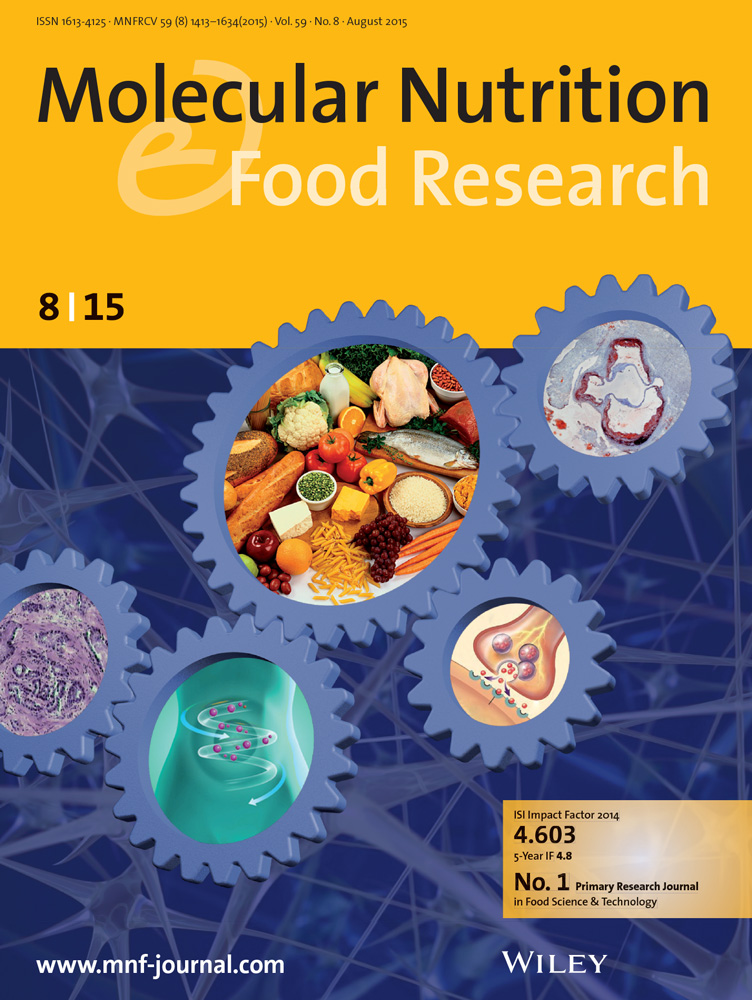L‐Theanine Alleviates High‐Fat Diet‐Induced Obesity by Enhancing Hepatic Oxidative Phosphorylation and Remodeling Gut Microbiota to Augment Butyrate‐Producing
IF 4.2
2区 农林科学
Q1 FOOD SCIENCE & TECHNOLOGY
引用次数: 0
Abstract
Obesity represents a significant global health challenge, necessitating innovative therapeutic approaches. L‐theanine, a bioactive component in tea, possesses diverse biological activities. This study investigates the anti‐obesity mechanisms of L‐theanine, focusing on its effects on lipid metabolism, energy expenditure, and gut microbiota using both in vitro and in vivo models. In vitro, L‐theanine (2 mM) reduced hepatocyte lipid content by downregulating lipogenic genes. In vivo, 12‐week supplementation with L‐theanine (30 and 100 mg/kg/day) dose‐dependently decreased HFD‐induced body weight gain, adipose tissue mass, and serum triglycerides (TG) without altering food intake. Mechanistically, L‐theanine disturbed the transcription of some key genes closely related to thermogenesis, lipid oxidation, and glycolipid metabolism, with hepatic transcriptomics confirming the enrichment of oxidative phosphorylation and thermogenic pathways. Critically, L‐theanine also regulates gut microbiota, specifically increasing the abundance ofL -茶氨酸通过增强肝脏氧化磷酸化和重塑肠道微生物群来增加丁酸盐的产生,减轻高脂肪饮食引起的肥胖
肥胖是一项重大的全球健康挑战,需要创新的治疗方法。茶氨酸是茶叶中的一种生物活性成分,具有多种生物活性。本研究探讨了L -茶氨酸的抗肥胖机制,重点研究了其对脂质代谢、能量消耗和肠道微生物群的影响,采用体外和体内模型。在体外,L‐茶氨酸(2 mM)通过下调脂质基因降低肝细胞脂质含量。在体内,12周补充L -茶氨酸(30和100 mg/kg/天)剂量依赖性地降低了HFD诱导的体重增加、脂肪组织质量和血清甘油三酯(TG),而不改变食物摄入量。从机制上讲,L -茶氨酸干扰了一些与产热、脂质氧化和糖脂代谢密切相关的关键基因的转录,肝脏转录组学证实了氧化磷酸化和产热途径的富集。至关重要的是,L -茶氨酸还调节肠道微生物群,特别是增加Blautia的丰度和促进短链脂肪酸的生物合成。总的来说,这些发现表明,L -茶氨酸有望作为一种多靶点治疗肥胖、调节脂质代谢、增加能量消耗和维持肠道微生物群稳态的药物。然而,其分子靶点、机制和对人体的适用性仍不清楚。
本文章由计算机程序翻译,如有差异,请以英文原文为准。
求助全文
约1分钟内获得全文
求助全文
来源期刊

Molecular Nutrition & Food Research
工程技术-食品科技
CiteScore
8.70
自引率
1.90%
发文量
250
审稿时长
1.7 months
期刊介绍:
Molecular Nutrition & Food Research is a primary research journal devoted to health, safety and all aspects of molecular nutrition such as nutritional biochemistry, nutrigenomics and metabolomics aiming to link the information arising from related disciplines:
Bioactivity: Nutritional and medical effects of food constituents including bioavailability and kinetics.
Immunology: Understanding the interactions of food and the immune system.
Microbiology: Food spoilage, food pathogens, chemical and physical approaches of fermented foods and novel microbial processes.
Chemistry: Isolation and analysis of bioactive food ingredients while considering environmental aspects.
 求助内容:
求助内容: 应助结果提醒方式:
应助结果提醒方式:


